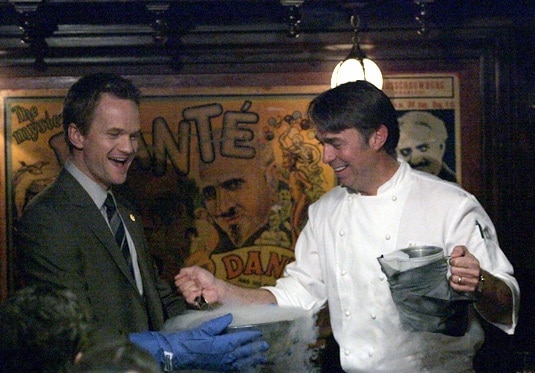
Create a free profile to get unlimited access to exclusive videos, sweepstakes, and more!
Mystery Meat
James Oseland was seduced ... by Anita Lo's winning dish.

First things first, dear readers. It turns out that, in addition to being a fan of magic, the actor Neil Patrick Harris is a devoted Top Chef fan and an avid cook, as is his partner, David Burtka, who is enrolled at the famed cooking school the Cordon Bleu.
Love it.
Now, on to business and a few behind-the-scenes insights. It’s been great fun to watch each episode and surprising to see how the hours and hours of cooking, tasting, discussing, and, in many cases, arguing the finer points of every dish have been edited down to a neatly packaged, hour-long show. While the producers have done an amazing job of distilling the essence of our experiences for viewers, let’s face it: food is sensual, and there’s a ton of aromas and textures and sensations that just can’t come through the television set.
This particular challenge was particularly stimulating. In designing dishes around emotions or themes tied to the world of magic — surprise, mystery, illusion, spectacle — the chefs pulled out all the stops and created a complete sensory overload — a smorgasbrod for the senses, you might say.
I think it was Mark Peel who embraced the most clearly the connotations of his assigned word — mystery. He delivered snapper en papillote, or, roughly, wrapped up. It looked great, like a little present we all couldn’t wait to tear open. But it sat around, and it suffered for that: it lost the gorgeous immediacy and whoosh of steam it would have had had it been served and sliced open right away. (The leeks and the fish, especially, seemed overcooked; hence the lukewarm score from yours truly.) John Besh’s dish, designed around the word surprise, showcased what he does so expertly: sophisticated food that is French in its technique but brashly American in its soul. He is a genuinely gifted cook. (I was sad to see the snarling mess that came of his baked egg dish.) Extraordinary grace was present in all three of the components of the “salmon three-ways," notably the perfectly cooked lobster wrapped in gently smoked salmon. My main complaint was that the liquid nitrogen–made horseradish sauce ice cream (a detour from Besh’s classic bent) was so startlingly cold that it was almost painful to eat.
Poor Doug — forevermore, perhaps, to be known as Doug “Flaming Coconut” Rodriguez. His “spectacle” just didn’t work. From the moment he left the kitchen, he was trailed by the unsubtle petroleum smell of Sterno, which clung to the food as well. There was no overcoming it. (It was instructive to hear that he’d been hoping to use 151 proof rum to ignite his coconuts. I’m kind of relieved that didn’t happen. If he’d gotten his hands on it, some eyebrows might have been singed.)
When Anita Lo presented her dish, crafted around the word illusion, it did indeed look like the scallop it wasn’t. The culinary chicanery wasn’t instantly appealing, though. Raw beef inside of poached daikon? My reaction upon slicing in was “Hello, Texas Chainsaw Massacre!” It was pretty gory in there. Then, within seconds, I was overtaken by a glorious aroma wafting up from the plate: hints of sesame oil and kochujang, that delicious Korean soy-and-chili condiment, from the beef, and the muted fragrance of seaweed and bonito from the dashi-like broth. This was serious food, and eating it was purely satisfying because it engaged all the senses. The daikon was perfectly poached and tender, and the lush tartare was one of the best I’ve ever eaten. I’m not generally a fan of fusion cooking — cooks are too often careless, wantonly throwing “exotic” ingredients around — but Anita knew every element of that dish and what to do with it. The whole package completely seduced me.














